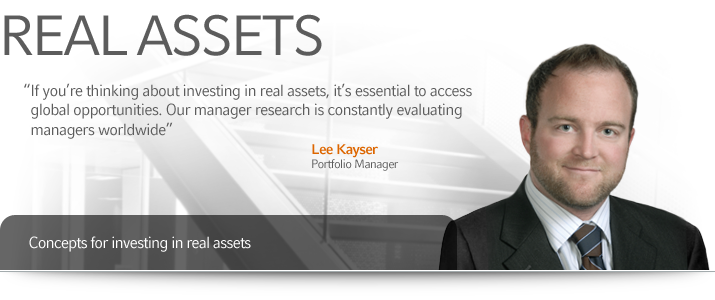Nonprofits Investment Strategies
Post on: 16 Июль, 2015 No Comment

Healthy nonprofits are committed to maintaining a steady, robust income stream; developing and implementing sound investment strategies; and paying daily attention to accounting controls.
Robust Income Streams
Truly healthy nonprofits enjoy diverse funding sources. They protect the continuity and stability of every income stream. They assign a single staff member to pay particular attention to each client or grantor. They make sure they completely understand expectations and comply with all reporting requirements and operational restrictions. They give progress reports (even if they are not technically necessary) and solicit feedback.
They also highlight successful community service by notifying the media. Media coverage can quickly and inexpensively reach thousands of potential supporters, clients and volunteers. Coverage in a local paper or on the evening news can bring in new financial and human resources and make existing supporters feel like their investment has been worthwhile. Efforts to create a good public image can yield and impressive return on investment.
Sound Investment Strategies
Most nonprofits handle cash—currency or cash equivalents, such as checking accounts—and should explore ways to make its cash generate an independent income stream. Consider using checking accounts that pay interest or opening a federally-insured certificate of deposit (CD) or high-interest saving account at a local financial institution.
However, know that any independent income stream is not risk-free. Good risk management with regard to an investment strategy requires the organization to balance three, sometimes-competing goals: 1) minimizing investment risk, 2) obtaining access to the funds when needed, and 3) earning a reasonable rate of return. To manage and control these complex issues, nonprofits should:
- Establish investment objectives and capabilities. The board should examine the nonprofit’s short-term and long-term goals. In the context of the mission, operations, and financial needs, the board must then establish investment objectives and risk tolerance. It must consider how many separate instruments and funds to establish and the time horizon of the commitment, the types of acceptable instruments, and the circumstances under which funds may be withdrawn from investments prior to maturity.
- Hold a corporate officer accountable. The board should carefully and diligently screen a corporate officer, possibly the treasurer, who will oversee the investment manager within clear boundaries of authority. The officer should authorize investment strategies, approve transactions above a certain monetary level, review account statements, protect against unauthorized trades or unusual activity, ensure that donor restrictions are observed, and recommend investment policy revisions to the board. The officer should be required to make periodic reports to the board outlining his review of the investment manager’s performance.
- Select an investment manager. Determine whether internal staff has the skill and expertise to manage the investment portfolio or whether an independent professional, such as a bank or securities firm, must be retained. If an independent professional is used, screen every candidate and his or her firm. Consider specialized areas of expertise, compensation arrangements that might affect advice or counsel, and information provided by past clients and the state securities office [contact North American Securities Administrators Association to request a state government listing] or the National Association of Securities Dealers. Watch out for anyone who:
- has lied to you about how long he or she has been in the business.
- moves around a lot, especially among smaller firms.
- has filed for bankruptcy, has unpaid judgments or liens, or has other negative information about his or her personal finances.
- has been disciplined by a regulatory agency; has been fired or voluntarily resigned as a result of complaint of misconduct; or has been convicted or theft, fraud or forgery.
- has pending consumer lawsuits or arbitrations against them alleging sales practice violations; arbitration awards or court judgments or complaints alleging losses exceeding $5,000 or settlements exceeding $10,000.

Consider whether the candidate is willing and able to handle your account, especially if the commission will look insignificant when compared with his or her other accounts, and avoid candidates who will pressure you into quick decisions or who get frustrated answering basic questions. Ascertain whether you will be able to read and understand the account statement and monitor the investment manager. Make sure that your choice is knowledgeable about investment strategies, as well as the nonprofit’s objectives, guidelines and risk tolerance.
As you evaluate investment firms, consider:
- the firm’s investment philosophy and approach;
- the firm’s experience with nonprofit organizations;
- the firm’s experience working with volunteer leaders;
- the firm’s recent experience managing investments for organizations that are similar in size to yours; and
- whether the firm is willing to meet with your board of directors.
- Determine a suitable asset allocation. Several types of investments may be needed to diversify the portfolio and reduce the impact of market, inflation and interest rate risks. Create a threshold percentage that may be allocated to each investment type and list criteria from which to determine whether a particular instrument is acceptable to meet the nonprofit’s objectives. Over time, re-evaluate the allocation for investment type and for the percentage of the portfolio, and make appropriate readjustments to diversification and asset allocation.
- Prohibit inappropriate investments. Prohibit or limit the use of high-risk investments, which may include high-yield bonds (a.k.a. junk bonds), real estate, commodities, and oil and gas exploration stocks. Solicit professional counsel with respect to the use of derivative securities (e.g. collateralized mortgage obligations), futures, options, short sales, puts or calls.
- Understand the nonprofit’s relationship with its investment manager. Clarify the expected level of service and talk about how you can facilitate an effective working relationship with the professional. Be clear about the compensation that the professional will receive in exchange for managing the account(s). Carefully read any and all account agreements. Thoroughly read and consciously agree to all terms and conditions. Make sure you understand your rights as an investor. Pay particular attention to decision-making authority, risks assumed, fees and costs involved, and the dispute resolution process. Ask whether the account is insured, either by the Securities Investor Protection Corporation (SIPC) or by a private insurer, and what types of financial losses are insured. Do not rely on any verbal statements that are not contained in the agreement.
- Establish procedures to handle unsolicited investment offers. Reputable firms want you to ask questions, review information, and feel comfortable with the investment. Swindlers just want your money. Consider a procedure that will answer the following questions:
- How long has your company been in business? What are the names of your firm’s officers?
- What risks are involved in this investment? Please provide a disclosure statement.
- Is this investment traded on a regulated exchange? Is your firm subject to regulatory supervision?
- Can you send me written information so I can discuss it with my board of directors?
- Can I call you in a couple of days to schedule a meeting to discuss this proposal further, possibly with our treasurer and financial advisor?
Note. If you encounter a problem with your investment manager, first try to resolve the issue directly with the individual. The problem may involve a basic misunderstanding about investments, procedures, or the marketplace, and in that case, the selection of a new investment manager will only waste time and resources without solving the problem. If you are not satisfied after speaking directly with your broker, contact the branch manager, compliance department or president of the investment firm. If you remain dissatisfied with the response, contact The Division of Enforcement and Office of Investor Education and Assistance at the Securities & Exchange Commission. Finally, consider mediating your dispute through the mediation department at the National Association of Securities Dealers .
If a change is necessary, perform a cost/benefit analysis prior to changing brokers. Some in-house instruments cannot be transferred and sale might result in back-loaded fees or commissions, and the broker may charge a transfer or termination fee. Also, the current broker will have little incentive to transfer the account in a timely manner or to spot roadblocks or mistakes that will slow departure. Depending upon the instrument and the stability of the market, the delay may be costly. The nonprofit may be able to facilitate a smooth transfer by moving all of its accounts. A clean break makes bookkeeping easier, and the nonprofit may be able to use the security industry’s electronic transfer system (ACATS or Automated Customer Account Transfer Service).
- Appropriately value investments. Consistently value investments throughout all funds (e.g. purchased investments at cost and donated investments at fair market value as of the date of the gift) and properly disclose the methods used in the footnotes to the audited financial statements.
- Use a second set of eyes to review transactions and access to funds. Create a current portfolio list that shows the location and type of all investment instruments and a log which shows the date, time and names of people who have had access to the investment instruments. Inventory investment instruments and reconcile the inventory with the internal accounts and any broker or trustee statements. Periodically compare market prices and dividend income with published sources.
Adequate Accounting Procedures
The board of directors retains ultimate responsibility for safeguarding nonprofit assets. The board and senior management set the tone for the organization. Staff and client attitudes about corporate controls and operational policies will be strongly influenced by the words and deeds of the organization’s leaders. The implementation of basic management controls when combined with accounting controls will help your organization conserve scarce resources and ensure good organizational health. But remember, any loss prevention program must be tailored to your agency’s unique needs and the resources available to best protect its finances and reputation.
The previous article was adapted from Healthy Nonprofits: Conserving Scarce Resources Through Effective Internal Controls. Chapter 5, pages 49-53














